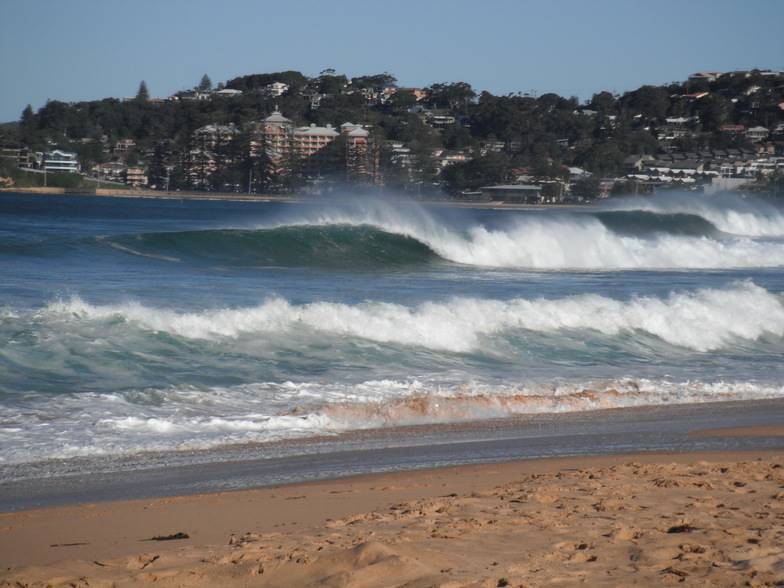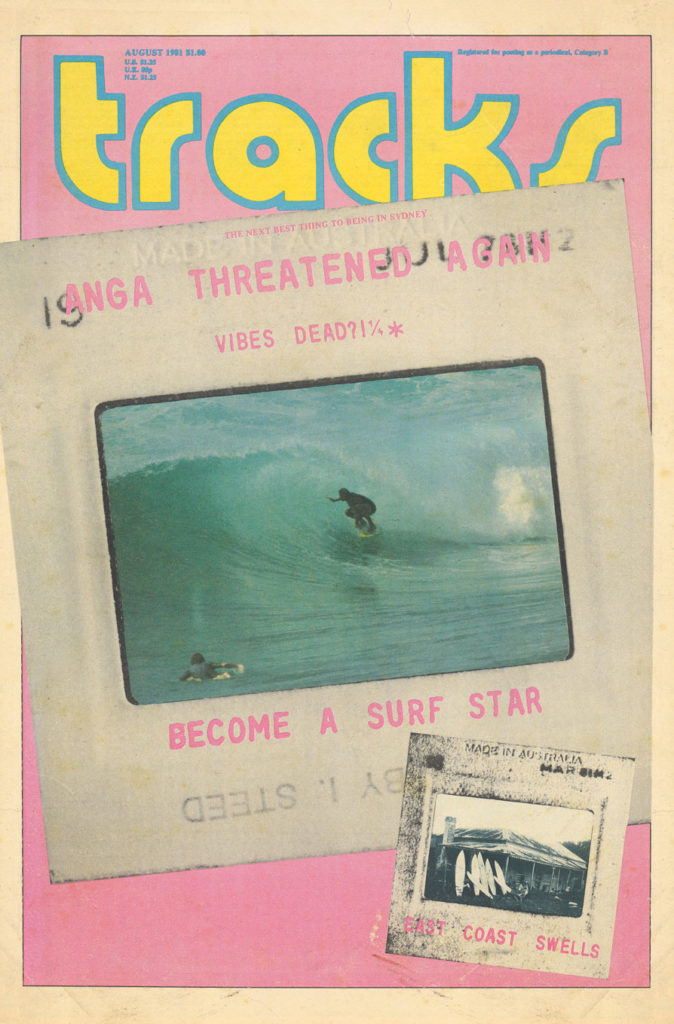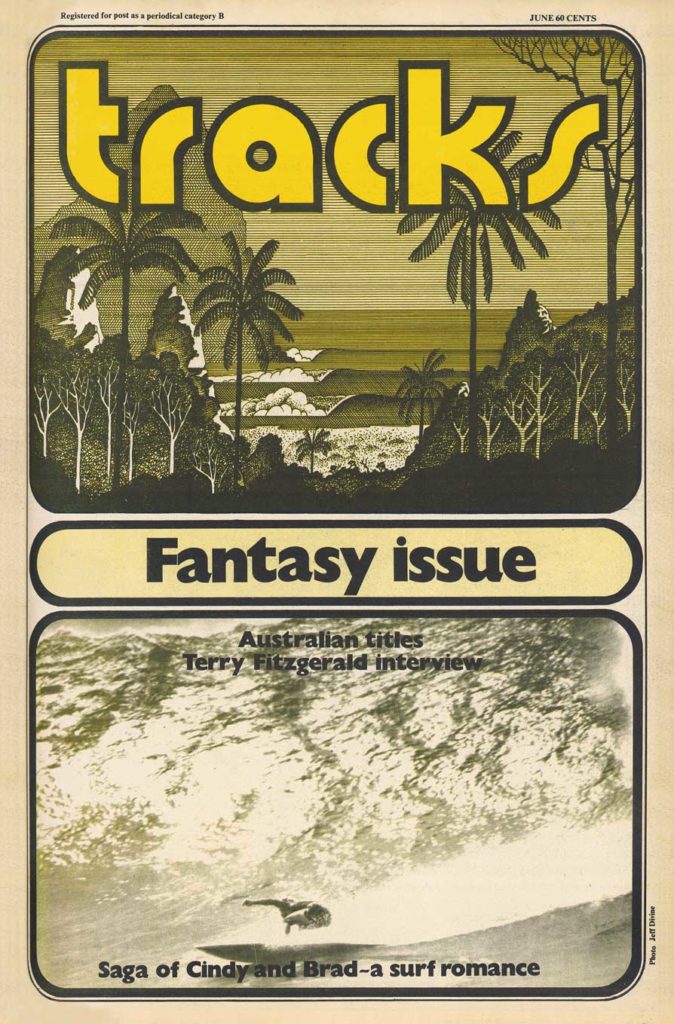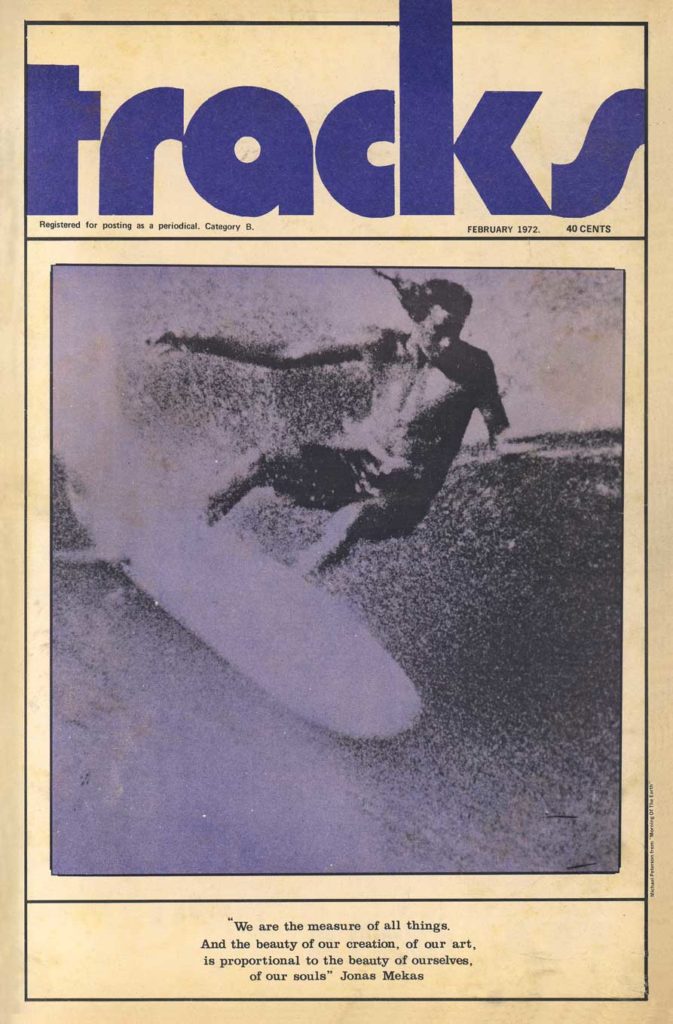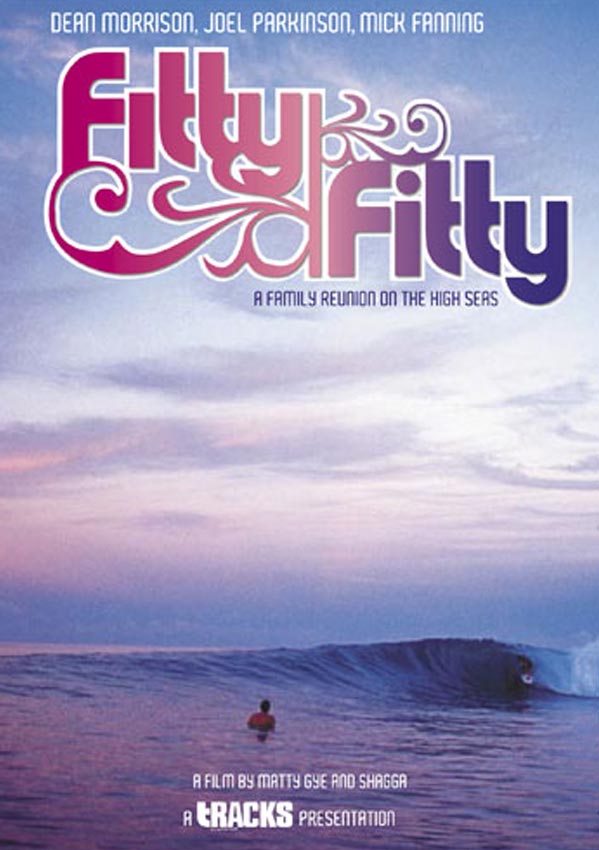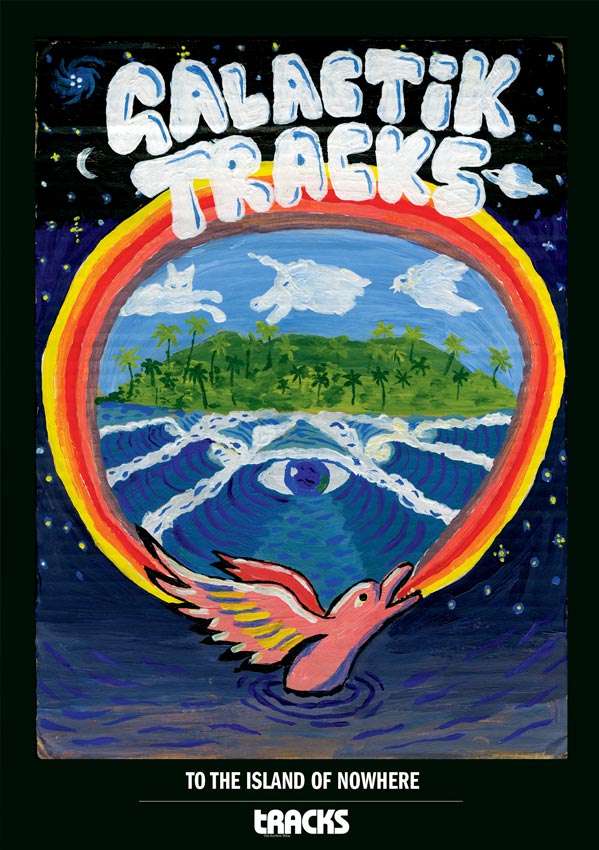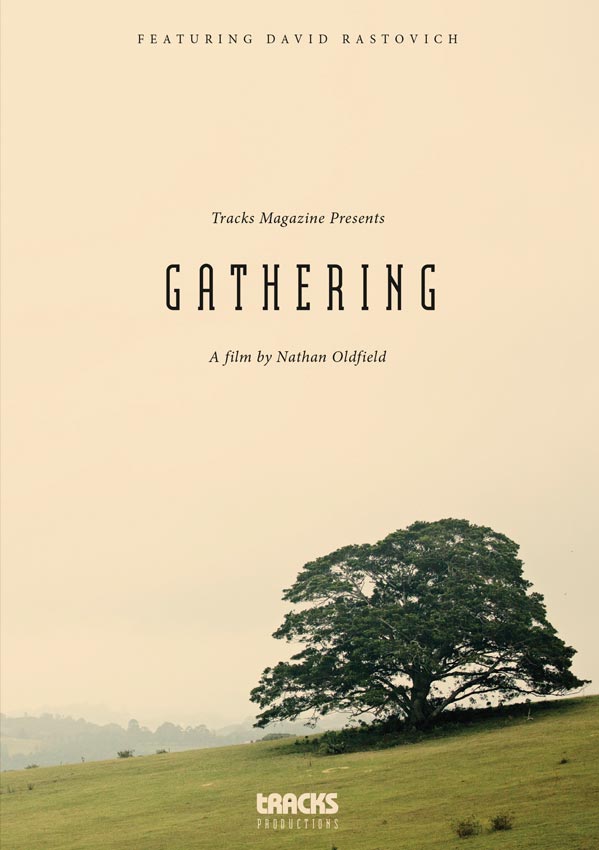When a series of east coast lows produced thundering surf over winter surfers celebrated. The glut of good waves proved to be the ultimate antidote to the COVID blues. Perhaps losing your job meant standing in a long line outside Centrelink. At least the lines of swell rolling in offered temporary relief from the dismay of unemployment.
While we reflected on the day’s tubular conquests, nightly news segments featured footage of the sea clawing at the footings of beachside homes at Wamberal on the NSW central coast; threatening to send the whole row of houses tumbling into a Pacific graveyard.
On a broad scale, the episode sparked an entire debate about rising sea levels and global warming. In the same way the bushfires had ravaged the south coast earlier in the year, many suggested Wamberal was now being subject to the violent symptoms of climate change.
Big picture debates aside, some residents and politicians felt they had to do something drastic quickly in order to save beachfront homes. All levels of government quickly mobilised behind a plan to build a seawall on Wamberal, to stymie future erosion. However, the decisions were made hastily and without extensive community consultation. While the 60-odd beach-front residents of Wamberal may have been gung-ho supporters of a seawall many others were adamant that this was a case of responding to one disaster by creating another – a move that would threaten waves, beach usage, coastal aesthetics and a way of life for the residents of Wamberal.
<iframe width=”560″ height=”315″ src=”https://www.youtube.com/embed/eOLVkFRnONw” frameborder=”0″ allow=”accelerometer; autoplay; clipboard-write; encrypted-media; gyroscope; picture-in-picture” allowfullscreen></iframe>
Journeyman freesurfer, Peter Hayes, has lived at Wamberal for over three decades and is convinced the seawall is a terrible idea. “Whatever it takes, we don’t want that wall!” Hayes emphasised over the phone. The concept that has been floated by the council doesn’t involve the kind of perpendicular rock groyne that you see at Kirra or D’bah. Instead, the proposal is to construct a colossal 1.6km seawall that runs parallel to the shoreline from Terrigal Lake to Wamberal lagoon. In coastal terms that’s like building the Great Wall of China on the beach.
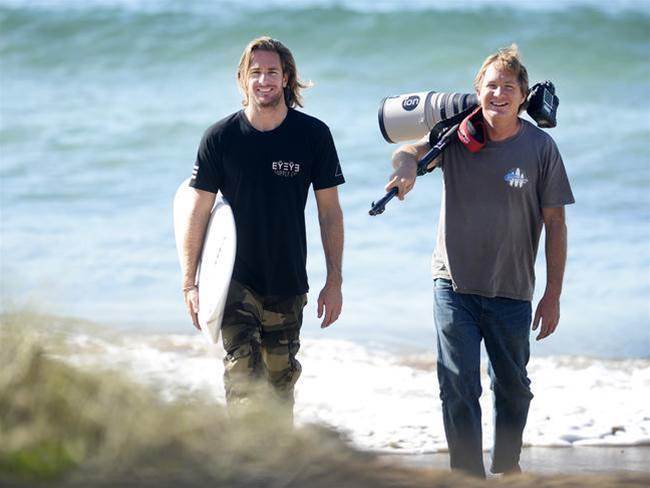
“If they build a concrete wall, the beaches will disappear. Sand dunes come and go, they’ve got to be left to do their thing,” emphasises Hayes. “They’ve put all these emergency big rocks and rocks with nets down there and that’s already affecting the way the waves break,” insists Hayes. “It’s already a lake. They’ve been dragging sand away from it and trying to re-pack it and the natural sand flow has already been disrupted. All the other beaches have been two or three-foot and Wamby has had nothing.”
Wamberal is home to around 6000 residents, and plays host to a thriving beach scene, which includes a strong boardriders club, an active surf club, volunteer beach-cleaning groups and thousands of recreational swimmers and beachwalkers. Many of the residents were up in arms over the way the issue was addressed in the wake of the big seas. “‘They were really sneaky about it. They took a few people from those beachfront homes, put them in a forum and said ‘what are we going to do?’” insists Hayes.
The mishandling of the original response and reports of plans to build the huge wall inspired a group of local residents to form the Wamberal Beach, Save our Sand (SOS) alliance. Furious over the lack of community consultation for such a major initiative the group is now confronting glacial government bureaucracy and Machivalian political manoeuvres, in order to save their beach.
In their stance against the wall, The SOS have sighted recent developments at Stockton, just North of Newcastle, where the use of the so-called ‘hard armouring’ approach has proven to be a costly mistake. The Newcastle council has now acknowledged the failure of the Stockton initiative and the residents of Wamberal fear that their beach will suffer the same plight if the lengthy seawall is built.
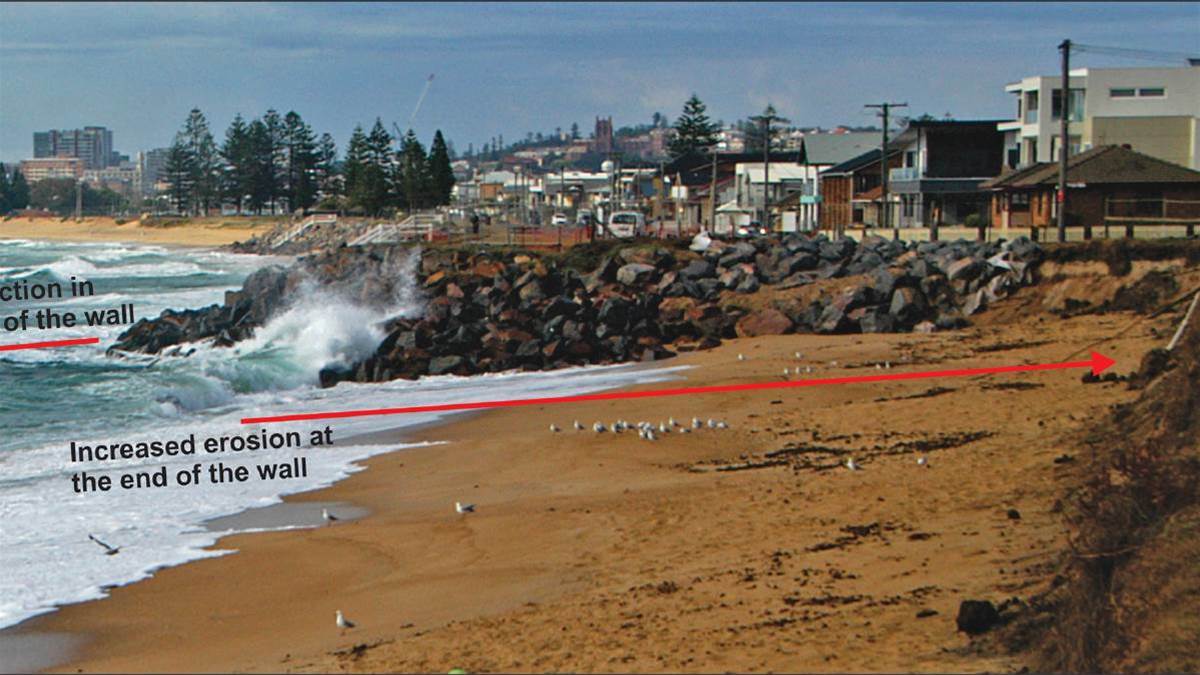
At face value, the Wamberal situation may seem like a localised issue, but it sets a precedent for other coastal councils around Australia. If the massive wall between Terrigal and Wamberal is approved on the central coast then it makes this blunt and ill-considered approach a more viable alternative for other councils that claim to feel threatened by coastal erosion.
While the Wamberal SOS wants to ensure that broad community consultation is at least part of any decisions made, Hayes suggests there is a best-case scenario for those who want to preserve the beach. “At the end of the day if they (the council) could just pay the owners out, take the houses away and let the sand dunes be sand dunes, that would probably be the best option.”
For the beachfront residents who have been forced to move out and are currently bailed up at the nearby Crown Plaza, losing their homes might be a bitter pill to swallow. However, removing the houses and creating a no-build zone that extends well back from the shoreline is probably the resolution that will best serve the broader community and protect what is priceless – the Australian concept of the beach.

